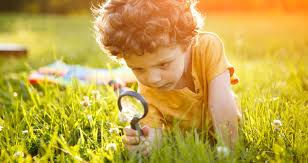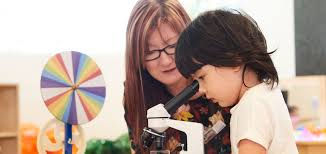Curiosity is important for a child’s learning and development?
- hajj0028
- Jan 18, 2021
- 3 min read

Curiosity plays a significant role in children's development and in increasing their four domains of development. Curiosity encourages children to think actively and explore the unknown, stimulate their questions and quench their thirst for knowledge. Curiosity is the key to success that leads children to understand math and to read well in early childhood.
The importance of curiosity in children is summarized by several indicators of the overall development of the child, and curiosity is one of the most critical signals for positive development in the process of growth and construction in character the child; and these indicators include:
1- Starting the child's intellectual development.
2- Improving the child's level of awareness of everything that is going on around him.
3- Curiosity indicates that the child possesses a high degree of intelligence.
4- It teaches children to ask the correct question.
5- Curiosity makes learning more pleasant.
The researchers found there is a region in the brain. It is called the hippocampus; it is responsible for giving a feeling of satisfaction and happiness, it is stimulated by arousing the curiosity of children, and it also lights up and provides the child with a sense of joy, as if the child is given something he loves, such as a piece of chocolate.
It helps children to remember the lessons.
6- Curiosity drives the child to learn from everything that surrounds him to continuously stimulate his brain and support it with the various information that he acquires from his curiosity. It is often memorable because he is searching for it, and others have not imposed it on him.

There are many ways that parents can help increase their children's curiosity, like:
Stimulate your child with open-ended questions:
It is one of the most important ways that help the child express his curiosity, and that is through the parents who provide sufficient time to answer the child's questions and also ask questions to the child that increase his curiosity about learning and getting to know things, for example when the parents go out with the child to nature. The mother asks the child about the color of the sky, the sea, stars, flowers, and plants because nature has a significant influence in arousing the child's curiosity, for example, the mother asks where did the butterfly come from, its money, and what other insects that fly, and that is by giving the child sufficient time to answer the questions. Allow the child to express their thoughts freely when children ask questions.
Stimulate your child with Open activities:
Parents can enhance their children's curiosity through open play such as loose parts and other open, renewable activities that increase their imagination. These activities will enable the learner to be curious and active non-passive learners, such as simulation-based activities and role-playing.
Create an engaging environment:
Parents must create an environment that stimulates the child's interest. They should also foster ambition in children to make them curious about the things around them, such as placing pictures on the walls, placing a decorative plant in the home, comic books, and placing balloons that expand children's experiences of curiosity and play.
References:
Dietze, B., & Kashin, D. (2016). Materials for sparking children’s curiosity and play. In Empowering pedagogy for early childhood educators (Chapter 9). Retrieved from http://www.pearsoncanada.ca/media/highered-showcase/multi-product-showcase/dietze-ch09.pdf
Tips on Nurturing Your Child's Curiosity. (n.d.). Retrieved January 18, 2021, from https://www.zerotothree.org/resources/224-tips-on-nurturing-your-child-s-curiosity
Stenger, M. (2014, December 17). Why Curiosity Enhances Learning. Retrieved January 18, 2021, from https://www.edutopia.org/blog/why-curiosity-enhances-learning-marianne-stenger
How to Teach Kids Science and Why It’s Important [Digital image]. (2018, September 7). Retrieved from https://www.learningliftoff.com/how-to-teach-kids-science-and-why-its-important/
8 Ways to Support Curious and Creative Children [Digital image]. (2019, July 9). Retrieved from https://www.guardian.edu.au/blog/child-development/8-ways-to-support-curious-and-creative-children/



Comments